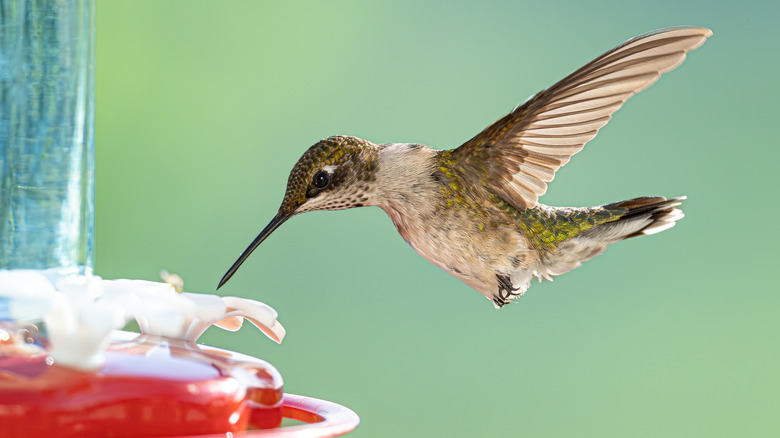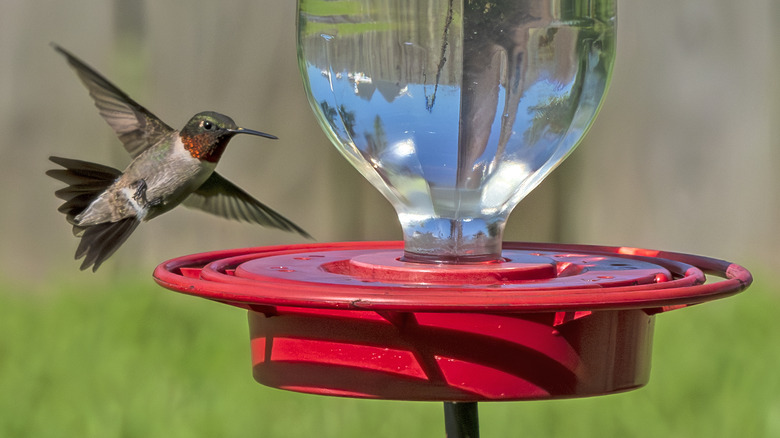Keep Hummingbirds Coming Back To Your Feeder By Refilling It At The Right Time
Watching hummingbirds flutter around is a delight, and one of the best ways to attract more hummingbirds to your garden is with the tasty treat of a feeder. Unlike regular bird seed feeders, hummingbird feeders are filled with one of their favorite foods: nectar. Though these birds are tiny, they eat a lot — because of their quick metabolisms, they eat half their body weight in bugs and sugar every day, feeding approximately every 10 minutes. Despite this, putting a feeder out doesn't always attract as many hummingbirds as you'd hoped. If you want to see more visitors, there's an easy fix: the timing of when you refill your feeder.
Hummingbirds are early birds (literally) that feed all day from dawn to dusk, typically seeking out their breakfast as early as 30 to 45 minutes before sunrise. They only search for food when they have the warmth and light of the sun to do so, so at night they take a break and enter a mini-hibernation state called torpor. It's best to refill feeders during this break, taking them indoors after sunset as close to full dark as possible. You can put feeders right back up after refilling them at night, but if you're willing to get up early enough, you may want to wait until just before sunrise; this prevents feeders from freezing in areas with cold nights, and keeps nocturnal animals like raccoons and bats from getting to them.
How to refill your hummingbird feeders each day
When you refill your feeder matters, but so does what you fill them with. You can make your own nectar with ¼ cup of sugar per 1 cup of water, but the only sugar you should be using in your DIY nectar is refined white sugar since it's safest for hummingbirds and most closely resembles the chemical composition of natural nectar. You should never add red dye to the nectar, either. Red is an effective color to invite more hummingbirds to your garden since it reminds them of flowers with high-quality nectar, but the chemicals in red dye can be harmful, so stick to using a red-colored feeder or planting native red flowers nearby. Flowers are also helpful for getting hummingbirds to find your feeder in the first place.
It's important to keep the feeder clean to prevent mold and bacteria that can sicken hummingbirds. Refill time should also come with a cleaning at least once a week, or twice a week or more in warmer climates since nectar spoils faster in hot weather. Placing your feeder in the shade can help keep nectar from fermenting. If you keep your feeder and the area around it clean and attractive to hummingbirds, and if your feeder refill schedule stays consistent, the birds will learn your feeding routine and keep coming back for more.

